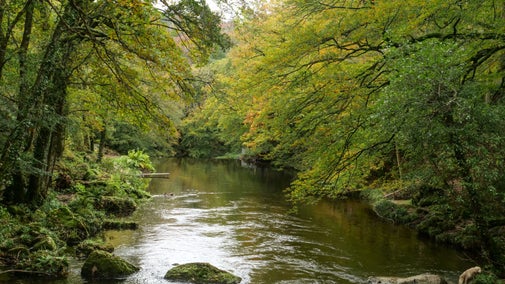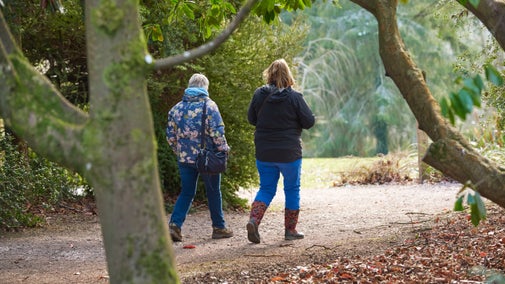Plymbridge and Plym Valley woodland wander
Devon
Take this gentle circular walk through ancient oak woodlands, beside the beautiful River Plym. Within the woods are remains of the area's industrial past and there are breathtaking views across the valley from the viaduct. Along the way you may see kingfishers, sea trout, dippers, peregrine falcon, deer and other wildlife.
Near to
Plymbridge WoodsStart point
Plymbridge Woods car park, grid ref: SX524585Trail information
More near here
Plymbridge Woods family cycle trail
A ten-mile cycle trail along the old Great Western Railway, through woodland and open countryside, suitable for children of of all ages.

Discovering Dewerstone Wood
Follow footpaths through the woods and alongside the river on this short, circular, waymarked walk that includes sections of the former granite quarry tramway.

Teign Gorge classic circuit
Follow the breathtaking Hunters Path high above the river Teign for chances to spot wildlife and stunning views. The path then drops down into the beautiful woodland as you follow the river back to Castle Drogo.

Branscombe to Beer coastal walk
Enjoy this scenic coastal walk in Devon, taking in the seaside village of Beer and Branscombe beach, where you can still see the anchor of MSC Napoli which grounded there in 2007.

Get in touch
Our partners

We’ve partnered with Cotswold Outdoor to help everyone make the most of their time outdoors in the places we care for.
You might also be interested in
Walking in Devon
From rugged coastline with captivating views to gentle woodland strolls, these are some of the best walks in Devon this winter.

Staying safe at National Trust places
The special places in National Trust care sometimes come with a few risks for visitors, be it coastline or countryside. Find out how to keep safe throughout your visits.

Follow the Countryside Code
Help to look after National Trust places by observing a few simple guidelines during your visit and following the Countryside Code.

Walking
Explore some of the finest landscapes in our care on coastal paths, accessible trails, woodland walks and everything in between. Find the best places to walk near you.

Cotswold Outdoor: our exclusive walking partner
Learn about the National Trust’s ongoing partnership with Cotswold Outdoor. Find out how they help us care for precious places and the exclusive discount available for National Trust supporters.

Outdoor activities in Devon
Get active this winter with outdoor activities at a National Trust place near you in Devon. There's lots to do with the whole family this season.

